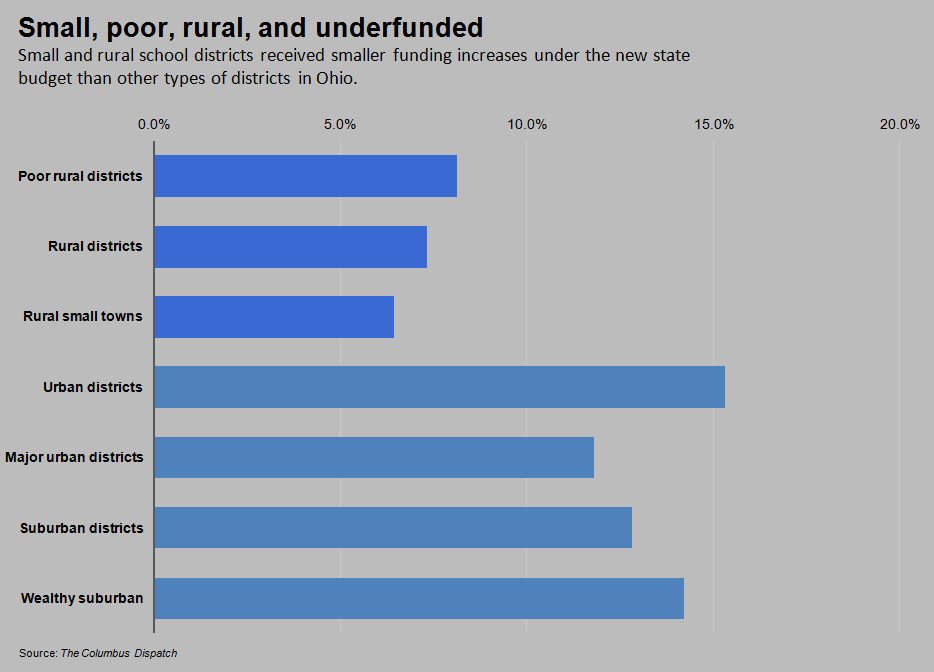What you need to know about Ohio Politics and Policy
Stephen Dyer · July 17, 2013
New school funding formula hurts poor, rural districts
This week, the Columbus Dispatch confirm what we’ve been saying ever since Governor Kasich introduced his school funding plan Jan. 31 — that it helps wealthy districts at the expense of poorer ones. In particular, we find it is overreliant on something called “per pupil valuation.” The term refers to the amount of money a district’s real estate is worth divided by the number of students. Here’s why this is problematic for state education funding: per pupil valuation overstates the poorest districts’ ability to raise local revenue, and underestimates (in some cases greatly) the ability of wealthy districts to contribute local revenue for education. Using data from the State Department of Education, the following chart illustrates the problem: In short, the formula expects more revenue than the poorest, smallest districts in the state can generate and asks too little of the wealthiest. That analysis has been validated by Dr. Howard Fleeter — probably the preeminent school funding analyst in Ohio, who’s been looking at school funding issues for three decades now. In a story in the Columbus Dispatch, Fleeter confirmed that the disparity we first noticed in February still holds true in the final draft.“Fleeter said, rural and small-town districts would see $55 to $92 per pupil less next year, while urban and suburban districts would get $207 to $457 more.”

(Note: increases in funding are for this two-year budget only. Over 4 years, 3 in 4 districts are receiving less than in 2010-2011)
As Fleeter put it in the Dispatch story: “It’s way too early to hang a banner and say mission accomplished.”
Tagged in these Policy Areas: K-12 Education | Ohio State Budget



